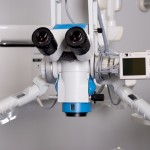
Surgical endodontic treatment is used when traditional root canal treatment is impractical or unlikely achieve a satisfactory outcome. The aim of this review was to evaluate the outcomes of surgical endodontic treatment performed using modern approaches. Modern approaches were considered to be use of magnification, root-end resection with minimal or no bevel, retrograde cavity preparation with ultrasonic tips, and retrograde root canal filling.
The Medline, Embase, Scopus, and Cochrane Central databases were searched for randomized controlled trials (RCT), controlled clinical trials (CCT), or prospective case series (PCS) with at least 12 months follow-up. A range of relevant dental journals were also hand searched. Only English language studies were included. Selection and data extraction and quality assessment was conducted independently by 3 reviewers
- 18 studies met the inclusion criteria, 11 were assessed as at low risk of bias ( 5 RCT, 2 CCTs, 4 PCS) the other 7 had a high risk of bias ( 4 RCTs, 3PCS)
- Meta-analysis (18 studies) found a pooled percentage of success (complete healing and incomplete healing) of 89%; uncertain healing 4.6%, and failure 6.4%.
- The outcomes obtained in studies using an operative microscope versus an endoscope were not significantly different, but both magnification devices were associated with significantly better outcomes than loupes. The use of MTA and of an operative microscope was associated with better outcomes compared with other retrofilling materials or magnification devices, respectively.
The authors concluded.
Surgical endodontic treatment performed by using the modern technique is a predictable treatment option. A successful outcome in a follow-up of more than 1 year postoperatively was achieved in 89.0% of cases. The type of retrofilling material and magnification device could affect the outcome. Additional large-scale prospective clinical studies are needed to evaluate possible predictors of success and failure.
Comment
This review is an update of a 2009 review published by the same lead author. Two other reviews by Setzer et al support the finding of the current review although the 2010 review by Del Fabbro which only included 3 prospective studies found no significant differences amoung patients treated using magnifying loupes, surgical microscope or endoscope. While this latest review does include the largest number of studies to date it is restricted to those published in English.
Links
Tsesis I, Rosen E, Taschieri S, Telishevsky Strauss Y, Ceresoli V, Del Fabbro M. Outcomes of Surgical Endodontic Treatment Performed by a Modern Technique: An Updated Meta-analysis of the Literature. J Endod. 2013 Mar;39(3):332-9. doi: 10.1016/j.joen.2012.11.044. Epub 2013 Jan 23. PubMed PMID: 23402503.
Setzer FC, Kohli MR, Shah SB, Karabucak B, Kim S. Outcome of endodontic surgery: a meta-analysis of the literature–Part 2: Comparison of endodontic microsurgical techniques with and without the use of higher magnification. J Endod. 2012 Jan;38(1):1-10. doi: 10.1016/j.joen.2011.09.021. Epub 2011 Nov 21. Review. PubMed PMID: 22152611.
Setzer FC, Shah SB, Kohli MR, Karabucak B, Kim S. Outcome of endodontic surgery: a meta-analysis of the literature–part 1: Comparison of traditional root-end surgery and endodontic microsurgery. J Endod. 2010 Nov;36(11):1757-65. doi: 10.1016/j.joen.2010.08.007. Epub 2010 Sep 17. Review. PubMed PMID: 20951283.
Del Fabbro M, Taschieri S. Endodontic therapy using magnification devices: a systematic review. J Dent. 2010 Apr;38(4):269-75. doi: 10.1016/j.jdent.2010.01.008. Epub 2010 Feb 1. Review. PubMed PMID: 20117164.
Tsesis I, Faivishevsky V, Kfir A, Rosen E. Outcome of surgical endodontic treatment performed by a modern technique: a meta-analysis of literature. J Endod. 2009 Nov;35(11):1505-11. doi: 10.1016/j.joen.2009.07.025. Epub 2009 Sep 20. PubMed PMID: 19840638.

[…] Dental Elf -21st Feb 2013 – Review finds predictable outcomes with modern endodontic surgery t… […]
[…] Dental Elf – 21st Feb 2013 – Review finds predictable outcomes with modern endodontic surger… […]